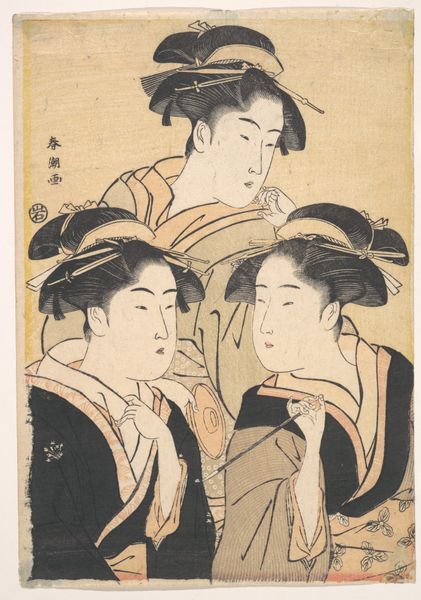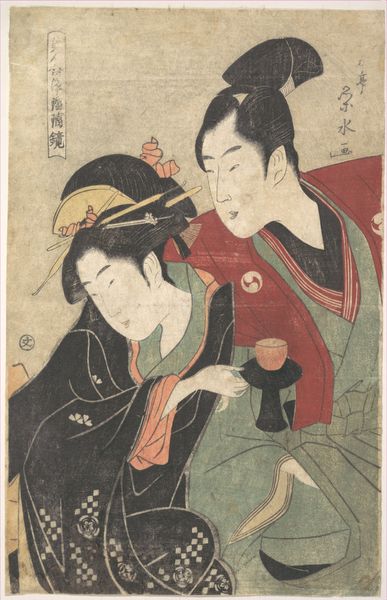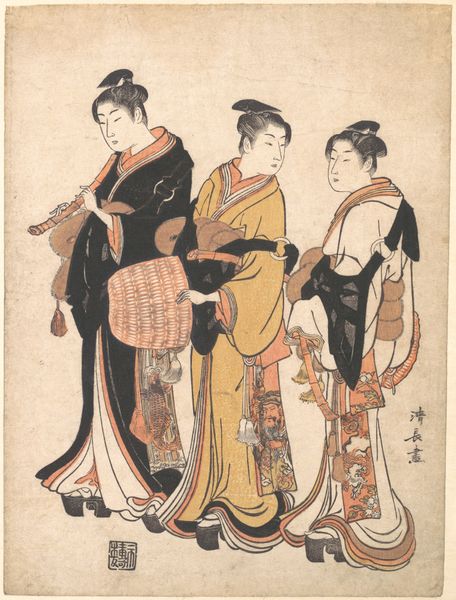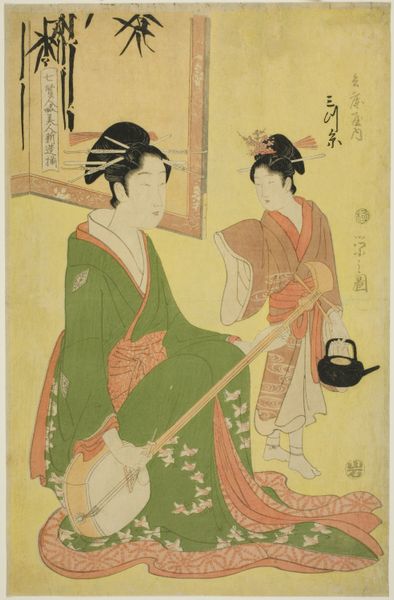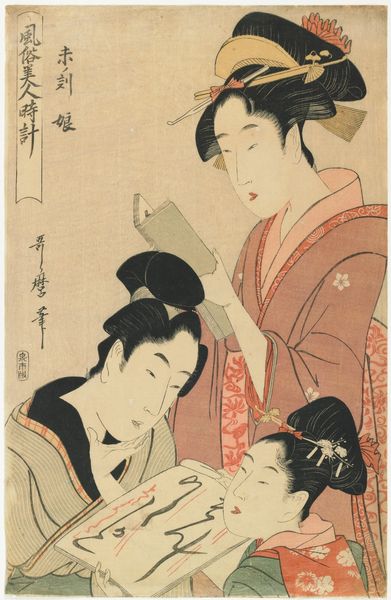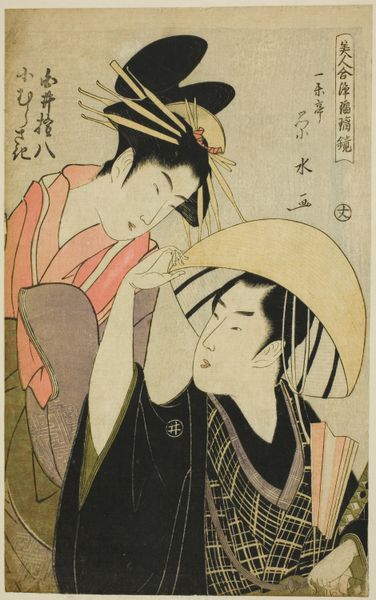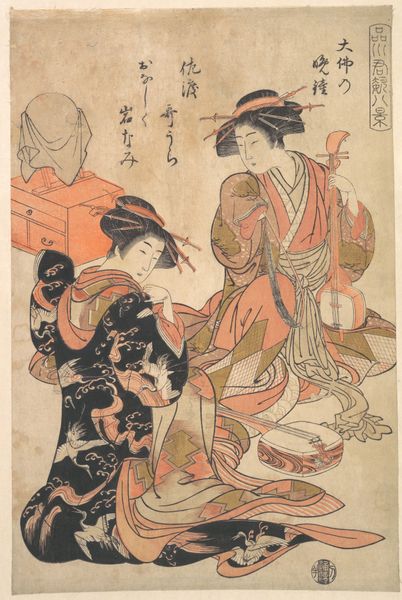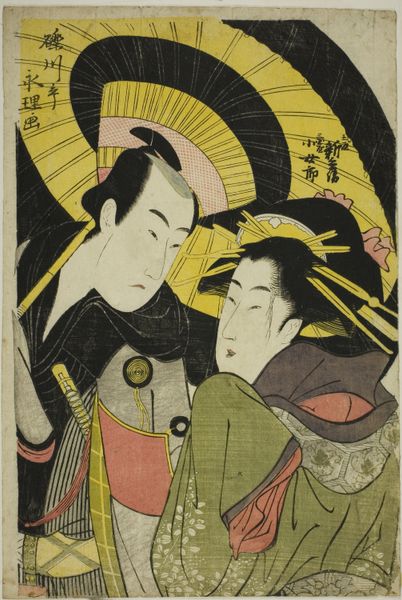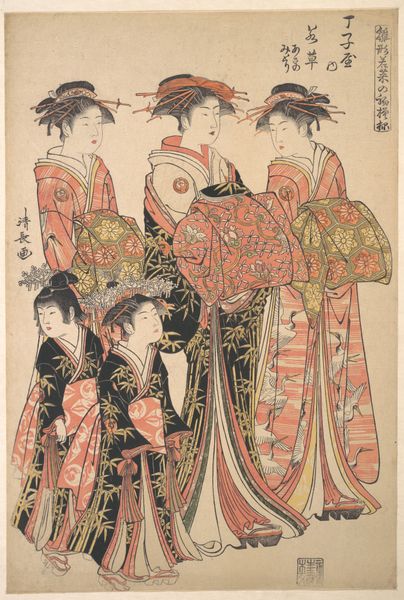
print, woodblock-print
#
portrait
# print
#
caricature
#
ukiyo-e
#
woodblock-print
#
genre-painting
Dimensions: 15 1/8 × 10 1/8 in. (38.4 × 25.7 cm) (image, sheet, ōban)23 × 19 × 1 1/2 in. (58.42 × 48.26 × 3.81 cm) (outer frame)
Copyright: Public Domain
Curator: Asazuma-bune, a woodblock print crafted around 1793 by Kitagawa Utamaro, invites us to reflect on the representation of women in Ukiyo-e art, now held at the Minneapolis Institute of Art. Editor: Three figures—softly colored, faces gentle. I see a quiet conversation; it feels very intimate, doesn’t it? Like peeking into a private moment shared amongst friends. Curator: These women inhabit the floating world—they are courtesans. Utamaro often challenged norms, and his focus here allows us to unpack societal structures and gender dynamics of Edo-period Japan. How are women both empowered and constrained by their social roles? What gazes are in play? Editor: Gosh, the woman in green reminds me of this quirky shop owner I knew. She had a crazy hat obsession! See that elongated hat; what’s the deal with it anyway? Does the shape suggest power? I bet wearing it you’d have to throw your head back as you’d enter a room, kind of intimidating, really! Curator: Hats such as this are signifiers of occupation and fashion. Examining these markers allows us to dive into social hierarchy, tracing how fashion becomes both an expression of identity and a tool of class distinction. Who dictates these trends? Editor: Did they just wear what they wanted or what? I mean, it seems liberating but kinda enforced at the same time, doesn't it? Do you think these women knew they were immortalized as art… and now analyzed centuries later?! Curator: These images circulated among the pleasure quarters’ clientele. We might consider who had access to these representations and what ideological work they performed. Considering art from a political perspective shows us how art influences and mirrors power and subversion, Editor: Fascinating! Thinking of power, if you saw it without knowing that historical stuff, it just looks like a calming portrait—kind of sweet! These women and this era keep popping into today. It seems like they're reminding us: hey, remember history. Or else! Curator: Indeed. Looking closer at the piece in this way, allows us to be more aware of history repeating itself.
Comments
No comments
Be the first to comment and join the conversation on the ultimate creative platform.
